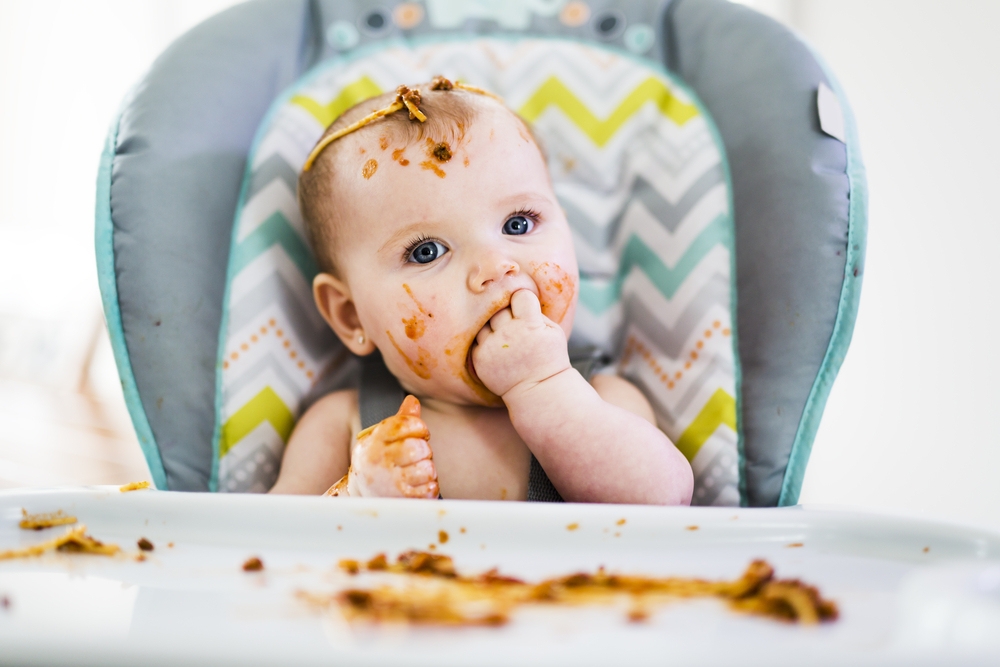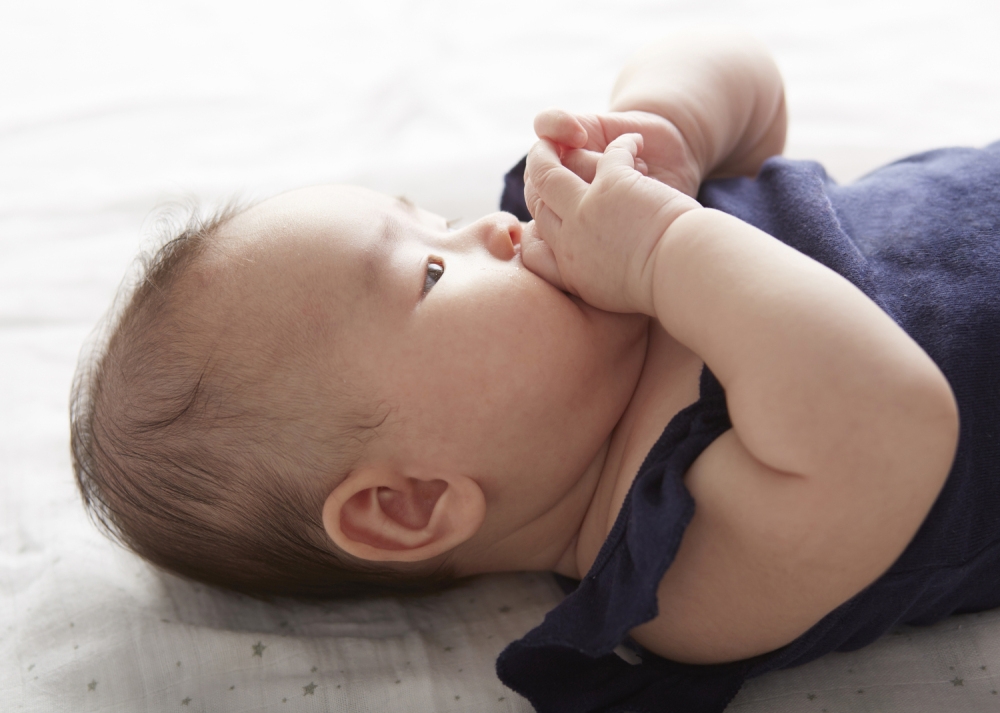Eating hands is almost the [common hobby] of babies all over the world, and parents are very worried when they mention their babies eating hands:
What if the disease enters from the mouth? How to do if your finger bites through the skin and deforms? What should I do when I grow up and eat my hands?
When I first saw Dabao eating his hands, I was also extremely anxious. However, my good friend and psychological consultant Chen Shi told me that babies who eat fingers may be smarter and need not worry too much.
Babies eat hands, [benefits] a lot
From the perspective of psychological development, there are many benefits for babies to eat their hands.
1. Babies May Be Smarter
Babies’ brain development requires a lot of [sensory stimulation] information to be input, so babies who are often touched and have parents to talk with may be smarter.
Eating hands is exactly what babies can accomplish by themselves. The younger the baby, the more he relies on his mouth to obtain such information, so he likes to chew everything he gives him first.
2. Exercise the sensory-motor system
The baby can take the initiative to put his fingers into his mouth accurately, which actually depends on the coordination and cooperation of the sensory system and the motor system. For the newborn baby, this is a happy progress.

Step 3: Realize self-appeasement
When the baby can’t be comforted by the mother’s nipples, he can replace it with [eating hands], which shows that he has found a way to satisfy himself, which is also conducive to the development of the child’s self-awareness.
4. Primitive emotional coping styles
Just as adults may also deal with anxiety by shaking their legs, picking their fingers and pinching things in their hands, children rely more on simple and repetitive physical tactile movements, and [eating hands] naturally evolves into the main emotional coping mechanism in infancy.
When and how to manage it
If the baby only eats his hands occasionally and does not cause physical injury or cause him not to be accepted by the people around him, parents do not need to stop it specially.
You know, stopping itself will strengthen the behavior of “eating hands”.
However, no matter how old the child is, if [eating hands] brings obvious disadvantages to the growth of the baby, for example, because eating hands is not accepted by other children or kindergarten teachers, or the fingers are bitten and molted, etc., parents must find ways to make the baby make some changes.

So how can we prevent the baby from eating his hands? The method varies from person to person, and it is often the most effective method that parents and children try to sum up together.
Here are a few examples for reference:
- For hygiene problems, the risk of bacteria entrance can be avoided by helping the baby wash his hands. Replace it with a pacifier that does not hurt hands or teeth. Discuss a fixed time and place with the child to let him eat his hands at will, and refrain from the rest of the time and occasions. Discuss a code word to remind children not to eat their hands. Before going to bed, give the child a comfortable and elastic elbow protection for his elbow joint, so that it takes a little effort for the child to bend his arms (eat his hands). After falling asleep, the arms are relaxed and straightened, and the fingers bounce off automatically.

In fact, in order to solve the problem of the baby continuing to [eat hands], what needs to be solved more is the baby’s emotional problems, especially emotional pressure.
As children grow older, they will gradually develop a better emotional coping mechanism and naturally eat less hands.
Some parents use strict measures to stop and even apply chili water, which in fact increases the emotional pressure of their children, making them more need to rely on their hands to deal with it.
We should remind everyone that eating hands is a way to meet the needs of the baby. The core strategy to prevent the baby from continuing to eat hands is to work with the child to optimize its emotional coping mechanism step by step and replace the old method with more advanced methods acceptable to the child.
